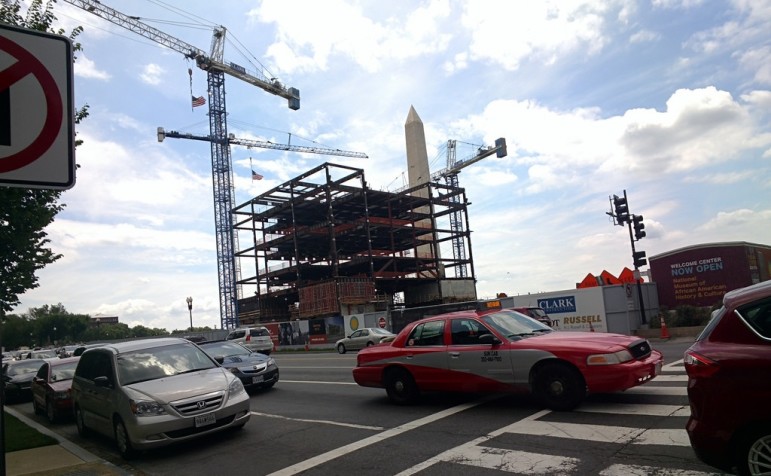
April 17, 2016; Washington Post
This September, when the Smithsonian opens the doors to the much-anticipated National Museum of African American History and Culture (NMAAHC) in Washington, D.C., many of its artifacts and exhibitions are expected to evoke strong emotions from those who visit. The building, which will occupy the last available space on the National Mall, has been designed to allow people to step away and process some of the more challenging history lessons on display. And now, with less than six months until the opening, the museum’s leaders are busy training staff and volunteers to deal with a range of possible responses to the collection—including “tears, sighs and even some anger.”
As explained by Esther Washington, the museum’s director of education:
Not a lot of (other institutions) are taking on, head on, one of the most difficult things society is facing today, which is the history of our country and how that impacts today. The idea of letting people sit with a little bit of discomfort is something we have to do because of the stories we have in the museum.
Among the items mentioned in the Washington Post article are child-sized iron shackles from the slave trade and an opening exhibition called “Changing America” that begins with the death of Martin Luther King Jr. and continues right up through the current Black Lives Matter movement.
Sign up for our free newsletters
Subscribe to NPQ's newsletters to have our top stories delivered directly to your inbox.
By signing up, you agree to our privacy policy and terms of use, and to receive messages from NPQ and our partners.
NMAAHC is hardly alone in opening a museum that to a large extent is intended to bear witness to challenging topics; the American Alliance of Museums estimates that 200 museums in the United States alone are focused on “difficult subjects, from the Holocaust to terrorism to World War II.” The International Coalition of Sites of Conscience, a worldwide network, represents memorials, museums and historic sites, and explains on its website why these places matter:
The need to remember often competes with the equally strong pressure to forget. Even with the best of intentions—such as to promote reconciliation after deeply divisive events by ‘turning the page’—erasing the past can prevent new generations from learning critical lessons while forever compromising opportunities to build a peaceful future.
The leadership of NMAAHC sought advice from the U.S. Holocaust Memorial Museum and the National September 11 Memorial & Museum. Smithsonian Secretary David J. Skorton has praised its design, which includes a contemplative court, an area with skylights and water adjacent to the history galleries, and a series of framed views of the Washington Monument. Textual explanations of graphic or violent topics will be bordered in red so visitors will know at a glance that the material may be disturbing.
It should be noted that while some areas of the new museum may be hard to process, other areas are likely to delight visitors. According to the website, “Cultural material being collected by the museum includes works of art, historical artifacts, photographs, moving images, archival documents, electronic data, audio recordings, books and manuscripts.” There’s a Louis Armstrong trumpet from 1946, archives from the Harlem Renaissance, George Clinton’s Mothership, and Chuck Berry’s candy-apple red 1973 Eldorado convertible.
Still, the staff is preparing to help people navigate what may be an unsettling overall visitor experience. More than 1,000 people applied for the new museum’s volunteer positions, and 360 were selected for their friendliness and helpfulness, as well as for being “intuitive people who can spot someone in emotional distress.” Training, which takes either four or nine months depending on the position, includes role-playing exercises and what-if scenarios aimed at accommodating many different types of reactions. As noted by Sarah Pharaon of the International Coalition of Sites of Conscience, “This is history that is personal, and creating an atmosphere that allows for people to share their personal truths is vital.”—Eileen Cunniffe












